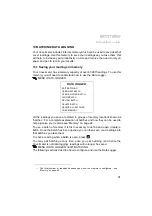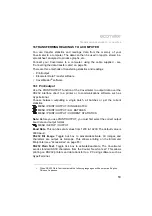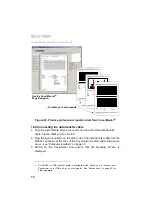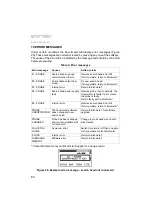
46
M
EMORY
R
14 MEMORY
All readings saved into the memory of your Covermeter are stored in ‘batches’.
Typically, a single batch is used to store readings from a particular area or
location on a site.
There are two types of batch; ‘linear’ and ‘grid’. When you open (create) or clone
a batch, you define whether the batch is to be in linear (
) or grid (
)
format.
14.1 Linear batches
A linear batch of memory locations is similar to a single row or column of cells
on a spreadsheet:
Maximum number of readings in a linear batch: 1000
Maximum number of linear batches:
72
14.2 Grid batches and surveying large areas of concrete
A grid batch of memory locations is similar to the grid of cells marked out by the
rows and columns of a spreadsheet:
Maximum size of a grid batch:
255 rows x 255 columns
Maximum number of grid batches:
500
Maximum number of readings:
over 65 000
Memory locations in a grid batch are referred to by their column letter and row
number, for instance A1, F4, etc.
Grid batches are typically used to save readings when surveying a large area
of concrete:
• On the concrete, mark out a pre-defined grid of squares, typically of 0.5 m
pitch. This is an arbitrary grid which does not necessarily align with the
reinforcement bars.
30 33 29 28 35 30 30 27 28 31 33
A B C D E F G H I
J K L
1
30 33 30 27 28 31 33 35 32 30 30
2
29 27 28 31 33 35 32 30 30 27 28
3
30 27 28 31 33 35 32 28 30 27 28
4
35 27 28 31 33 35 32 30 29 27 28
5
















































